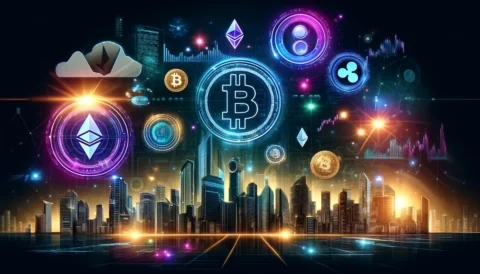Contents
The smartphone market is dominated by two operating systems i.e., Google with Android and on the other hand Apple with the iOS system. These are two dominant providers from the USA who, however, want to bring different concepts to the user. So the smartphone market is divided into Android and iOS users and everyone is convinced of the operating system he/she used. However, it is very challenging for businesses to decide that with which platform they should start their mobile app with. To solve this concern of yours, here we have gathered all the facts, pros and cons related to each of these operating system, their market share, and user preference; so that you can come up with a thoughtful decision.
And if you want a reliable Android and iOS app development company right away, then who can do it better than Code Creators.
Android – Quick Facts
- Google founds the Open Handset Alliance on November 5, 2007 with 33 partners.
- Android is an Open Source, which means anyone can use Android for free, but needs to install the Google Play Store and other apps. The presentation is also controlled by Google.
- Release of the first Android version was made on September 23rd ,2008.
- Current version since August 2018 is Android 9 Pie
- of Active Devices = 2,300,000,000+.
- of Apps in the Play Store = 3,800,000
- Market Share = 76 % (As of October 2018)
iOS – Quick Facts
- Development from 2005, first presentation at Mac World in January 2007 under the name iPhone OS.
- First smartphone that could be operated via touchscreen.
- Release 29.06.2007.
- Current Version – iOS 13.
- Active devices: 1,000,000,000.
- Apps on the App Store: 2,300,000+.
- Market share – 23.3 percent (as of October 2018)
Operating System versions
Google as well as Apple publish every year a new version of the operating system for its supported smartphones. First, the versions are made accessible to developers so that they can begin to adapt their apps to the new system. Afterwards the beta phase starts, in which interested users can load the beta version on their smartphones after previous registration. This can be tried and feedback sent to Google or Apple. After the beta tests are finished and all bugs have been eliminated, the new version of the operating system will be released by all users in the late summer / fall of each year. Here, however, there is a decisive difference. If Apple brings its new system to the start, all users get it at the same time, since it concerns exclusively Apple own devices, which run with iOS.
On Android, the distribution is not so easy to accomplish. Google’s own pixel devices receive the update within a very short time after the final release. By contrast, Android smartphones from other providers are waiting for a “new” operating system up to three quarters of a year, which is then almost considered obsolete again.
Also, only the most recent devices are supplied with an update of the operating system for Android. Older devices usually have no chance on a new operating system, unless the user flashed it via Custom-Rom.
This is due to the fact that Google grants its own devices only 3 years (previously 2 years) with system updates and 3 years of security updates. Users of Android phones from other providers have to deal with their own update policy.
At the moment, Apple is still in the lead, as it has even supplied the iPhone 5s from 2013 with the current iOS 12 software. However, there are now reports that the appearing in the fall iOS 13 no longer appears on the iPhone 5s and the later generations iPhone 6 and iPhone 6+. But 5 years’ updates are on the contrary to 3 years on Android already a bonus point.
Play Store vs. App Store
Both platforms together have nearly 6 million applications. Likewise, both stores are similar in construction. After the start of the respective store, there is an overview of all current apps, recommendations or popular apps. In the Play Store, there is a search bar at the top of the screen and the menu on the left. The App Store has the category selection on the left and the wish list on the right.
In the Play Store as well as in the App Store the expenditure for apps grows. According to a study, Android and iOS users spent $ 34.4 billion on mobile apps and games last year. iOS users spend $ 22.6 billion twice as much on an app as Android on the Play Store. The download figures of the iOS apps are half that of Android apps. Although it is expected that the majority of Android users will be able to match the sales in the Play Store to Apple’s App Store, this has not been the case so far. However, the study did not include revenue from advertising or the sale of physical goods via an app.
Another difference is the return of an app. In the Play Store you have 48 hours for this. You return an app by clicking your order history in the Play Store and selecting the three points behind the app you want to return. Here you choose ‘Request a Refund’ and give a reason why you want to return the app. Google then refunds the money. If the 48 hours are over and you have problems with the app, you can still contact the developer who may refund you the money.
In the App Store you have even 14 days for the return of the app. The return is not done via the App Store but via the Problem Report page of Apple. There, you log in with your Apple ID and see a list of all purchases over the last 90 days. You choose the app that you have problems with and give it back with a reason.
Approaching Android and iOS
Android and iOS are approaching each other. The user interfaces look pretty similar. Also the functions themselves are similar, because the developers of the apps have to adapt their offers for both systems. And once a developer finds a way to integrate a function well, he will try to make it usable for the other operating system as well. One can see the approach of the operating systems well with two examples:
Staggered notifications, which were introduced with Android 8 Oreo Apple took over for iOS 12, because it is the best representation for a 5 or 6-inch display. Google has gone for the gesture control, which Apple has launched last year with iOS 11 on the iPhone X, for Android 9 and the upcoming Android Q has taken over. Both systems, Android and iOS, have an on- screen time option (for iOS) and Digital Wellbeing (for Android) to help users keep their display time on track.
Also, Android and iOS devices have artificial intelligence to further optimize workflows. In Android Pie, rarely used background processes are limited by AI to save energy. Also, the display brightness can be automatically adjusted. The App Drawer shows the most used apps for faster accessibility, and the Smart Replies send suggested answers to your contacts.
However, Artificial Intelligence can also be found in the smart wizards Google Assistant and Siri. Siri, for example, can use the ‘shortcuts’ to trigger a whole series of linked actions. Siri also recognizes routines or learns from the behavior of the user. The mutual adoption of functions will benefit both systems, but will continue to approach them.
Difference between Google and Apple’s
Data Protection
The difference between the two companies: Google makes its money with software and user data, while Apple mainly with hardware. This means that Google earns its money primarily with advertising and that the customer sees exactly the advertising that interests him, Google needs as much data as possible. Apple, on the other hand, does not earn any money with its users and can therefore score points with regard to privacy and privacy. For example, iOS can disable browser tracking, which is used by the advertising industry to capture user data. Although this is also possible with the Chrome browser via the settings and the Privacy option, Google states here that many websites continue to access the data despite the disabled track function. Due to the many data scandals, however, Google has recently upgraded its privacy policy.
But to get into the ecosystem iOS a high price is needed. Android is now (though in different versions) on a variety of devices in the price ranges of 99-1000 euros. There are contract-free offers, where you pay the full purchase price directly. Or you acquire Android phones with contract with a provider for a symbolic euro. iOS, however, only runs on Apple’s own devices and there is even the cheapest, almost 9 years old device, only available from 500 euros. The iOS platform is a closed platform, meaning that Apple builds the hardware and also controls the software and tunes it perfectly to the iPhones. The iPhone user therefore has little creative freedom when customizing the user interface. He has to take what Apple dictates.
Open Source
Android is in contrast to iOS open source and every developer can screw their own Custom Rom here. Also, the user interface of Android can be customized via launcher, Icon Packs change the appearance and much more. Even the various providers of Android phones, which use only the Android operating system, once again bring their own surfaces at the start. For example, Huawei’s EMUI and Samsung’s OneUI offer proprietary interfaces incorporating the Android operating system.
Software Support
However, the negative side of Android Open Source is the already mentioned slow distribution of the operating system on all devices. Although Android controls this with Project Treble and Android One against, but it is still not possible at the touch of a button to supply all Android phones equally fast with the updates.
The same is true of the security updates that Google’s pixel phones get every month, and the rest of the Android Phones are up and running at quarterly rates. Apple, on the other hand, supplies all devices simultaneously. Although there are no monthly security patches here, if there is a patch, it will get all the devices.
Benefits Android
- Higher flexibility and greater device selection.
- open operating system.
- Customizable user interface.
- Larger variety of apps.
- Disadvantages Android.
- Greater risk of security vulnerabilities.
- Apps less controlled.
- Inconsistent updates.
- Often not as harmonious performance as Apple.
Benefits of iOS
- Hardware and software from a single source.
- Strictly tested, easy-to-use apps.
- Exemplary in terms of encryption and data protection.
- Even after years of updates.
- Disadvantages of iOS.
- Only available on expensive Apple devices.
- Little room for innovation from the outside.
- Less (free) apps.
- No as much device diversity as Android.
Conclusion
A real winner does not exist in the Android iOS comparison. Both systems have strengths and weaknesses. Android offers a high degree of adaptability to different conditions. Apple, however, has a coherent overall package at hefty prices. However, when it comes to updates, iOS is in the lead, because even 6-year-old devices are still supported, which would have long been sorted out on Android. However, the solution for your concern can be easily resolve by React Native App Development, which gives you ease of developing the similar app for both the operating system. If you need a professional help, Code Creators is the leader in Android and iOS app development, known for providing reliable mobile application development to its global clients.



